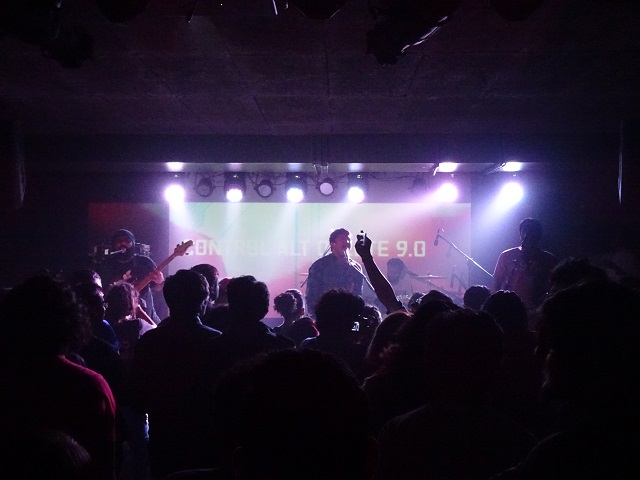Why is Bengaluru Nightlife Under Threat?
The bone of contention is the burdensome Public Entertainment License (PEL)
The Bengaluru authorities have recently been serving notices to pubs and venues that play music. While restaurant owners claim harassment, the authorities say they’re only doing their job. Amidst a labyrinth of laws, licenses and customary red tapism is the bone of contention: the hard-to-obtain Public Entertainment License (PEL).
Who started the fire?
The backdrop to this matter goes back to 1989, via the Licensing and Controlling of Public Amusement Order, 1989 that was issued by the Karnataka police to regulate businesses and entities that qualified as public amusement and was made applicable to restaurants, bars and live music venues. The Karnataka restaurant and live band association objected to this 1989 Order and the matter went up to the Supreme Court (SC) too, where the SC agreed with the association and allowed them to be exempted from the license requirement under the 1989 Order.
Original intention was to target dance bars
Fast forward to 2003-2004, Mumbai came down hard on dance bars and there was a sharp rise in the number of bar dancers in Bengaluru, which became a concern for regulatory authorities (i.e. the cops) in the city. Though this wasn’t originally cited as one of the reasons, the Karnataka police issued another order in 2005, the Licensing & Controlling of Public Entertainment Order, which sought to regulate this particular situation and, in the process, defined ”˜public entertainment’ to include live music bands, discotheques and cabarets too. So, the original intention has always been to target dance bars as it has been perceived as a cause for concern in terms of safety and ”˜morality’. However, by virtue of including the other two categories i.e. live music band and discotheque ”“ both live bands and recorded music venues were affected, and the association went back to contest the 2005 Order saying that it infringed their right to conduct business (free trade) and was, therefore, unconstitutional.
The 2018 verdict
After 13 years of the case going back and forth, it finally ended up with the SC, which then issued its verdict in January 2018 that upheld the constitutionality of the 2005 Order and also made it applicable to venues that had live music and recorded music, and in addition to the concerns under which the Order was originally issued, the SC added noise pollution as one of the reasons behind the license too, and stated that the enforcement of the Order was left to the discretion of the Commissioner of Police. This obviously created a furor ”“ because 1) there were no proper guidelines, or recommendations given by the Supreme Court; and 2) obtaining the license became a nightmarish process with your typical red tapism, bureaucracy and corruption decorating every part of the process.
The process to obtain the license meant submitting the following documents:
i) Approved plan by BMP or BDA or any other civic agency
ii) Copy of partnership deed, if it is a partnership firm
iii) Copy of lease agreement or title deed
iv) Certificate from approved electrical contractors
v) Certificate from Fire Brigade regarding fire safety.
vi) Occupation certificate issued by the concerned civic agency.
vii) Copy of Memorandum of Association (if applicable)
Of these seven documents, it is primarily the sixth one which is creating an issue. Because the Occupancy Certificate, or the OC, is a document issued by the concerned civil authorities to the builder, once the building has been completed and is certified as being compliant with the local civic regulations, applicable to buildings in the particular municipality or corporation. If the building isn’t compliant, or if the builder hasn’t received this OC, the chances of the tenant procuring the same are virtually nil. The problem with this licensing condition is that now, the onus to obtain this OC ”“ which is actually the builder’s / the owner’s ”“ has shifted on to the tenant; which is unfair to say the least and pretty much impossible, given that there would ideally be a time period within which the OC is issued. On this particular subject, the HC issued a clarification that buildings older than 1977 can be signed off for fitness by a certificate issued by the local BBMP commissioner. If this could be granted to other buildings as well, the problem may not be as severe.
How RWAs got involved
In addition to all of this, the residents welfare associations have picked up on the ”˜noise pollution’ aspect and are making it about how “peaceful lives” are being disrupted. The hypocrisy behind these statements is loud and obnoxious, because these residents have taken advantage of the high commercial value that these businesses have brought to their respective properties, and did not object or lay down conditions when they signed their first commercial lease, but are now twisting the story around to make these legitimate law-abiding businesses look like places that encourage “immoral” activities like “partying and drinking”. Needless to say, what strikes at the heart of the entire issue is the whole “not our culture” argument that is being pushed to make sure that venues are stopped from playing music.
It is to address this matter, and also reconcile these issues, that The Humming Tree is spearheading the discussion that will happen this Sunday, and will talk about the problem and possible solutions, involving people across different walks of life that are impacted by the license. We are hoping this will help bring more clarity to the matter and also unite all parties concerned to ensure that Bengaluru’s vibrant music scene isn’t buried alive because of a botched administrative move.
(Sandhya Surendran is a Bengaluru-based advocate and artist manager)




